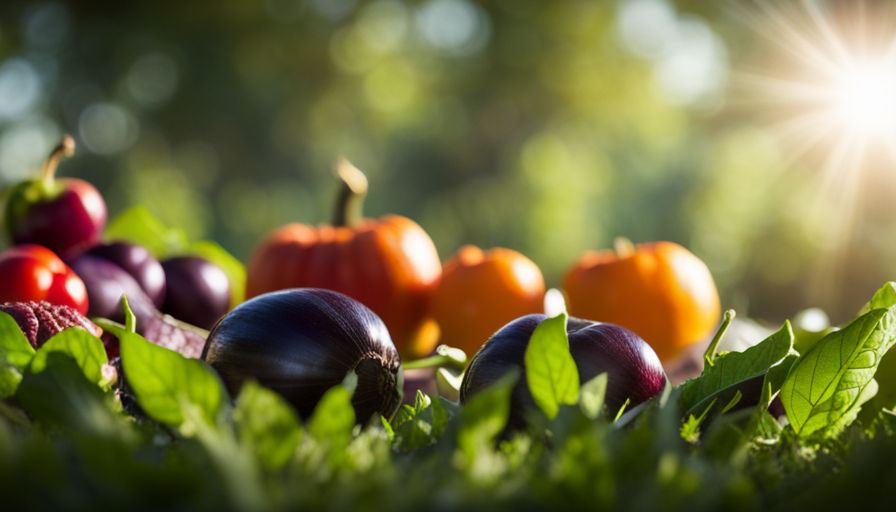In a society where coffee is now a must-have in countless individuals’ everyday schedules, a fresh fad has surfaced: butter coffee. This delicious and more nutritious concoction, crafted with coffee, coconut oil, and ghee/grass-fed butter, provides a fresh take on the classic cup of joe. The method for creating butter coffee is straightforward, necessitating solely a coffee maker and a blender.
Not only is it a cost-effective alternative to store-bought coffee, but it also allows individuals to reduce their carbon footprint by using their own mug.
Butter coffee is not just a trend; it comes with a plethora of health benefits. From nourishing the skin to regulating cholesterol levels, this creamy beverage proves to be more than just a tasty treat. It can also decrease inflammation, curb hunger cravings, improve metabolism function, and protect brain neurons. With the option to customize with additional ingredients like cocoa or vanilla, butter coffee provides a satisfying and guilt-free alternative to traditional coffee drinks. Made with real ingredients and without any added sugar, it is a smooth and creamy indulgence that will leave you refreshed and satisfied.
In this article, we will explore the benefits of butter coffee, comparing it to traditional coffee and providing an expert perspective on this delightful and healthier brew. So, grab your mug and prepare to embark on a journey into the world of butter coffee.
Key Takeaways
- Butter coffee is a combination of coffee, coconut oil, and ghee/grass-fed butter, providing numerous health benefits.
- Homemade butter coffee can save money and reduce carbon footprint, making it a cost-effective and environmentally friendly option.
- Butter coffee helps regulate cholesterol levels, decrease inflammation, curb hunger cravings, and improve brain function.
- It can be customized with additional ingredients and is a healthier alternative to traditional coffee drinks.
What is it?
Butter coffee, also known as bulletproof coffee, is a combination of coffee, coconut oil, and ghee/grass-fed butter, made with a simple coffee maker and a blender, resulting in a smooth, creamy, and rich beverage.
Different variations of butter coffee exist, with some recipes including additional ingredients like cocoa, peppermint extract, or vanilla to personalize the taste.
One of the potential benefits of butter coffee is its association with weight loss. The inclusion of healthy fats from grass-fed butter and coconut oil can help curb hunger cravings and make fasting easier. Additionally, the medium-chain triglycerides (MCTs) present in coconut oil have been shown to improve metabolism function.
However, it is important to note that while butter coffee may have potential benefits, it is not a magical solution for weight loss and should be consumed as part of a balanced diet and healthy lifestyle.
How it’s Made
Blending a combination of ingredients such as coffee, coconut oil, and ghee/grass-fed butter is essential to create a well-emulsified and satisfying beverage.
To make butter coffee, start by brewing a fresh cup of coffee using a simple coffee maker.
Next, add a tablespoon of coconut oil and a tablespoon of ghee or grass-fed butter to a blender.
Pour the hot coffee into the blender and blend on high for about 20-30 seconds until a creamy foam forms on top. Blending is important to emulsify the fats and prevent separation. However, it is crucial to avoid adding too much coconut oil, as it can lead to an upset stomach.
Using quality butter, like Kerrygold, is recommended for the best taste and health benefits.
By following these steps, you can enjoy a smooth, creamy, and satisfying cup of butter coffee.
When making butter coffee, there are a few common mistakes to avoid.
Firstly, using low-quality or salted butter can negatively impact the taste and texture of the drink. It is important to opt for unsalted grass-fed butter to ensure a rich and flavorful result.
Additionally, adding too much butter or coconut oil can lead to an overly greasy beverage that may be difficult to digest. It is recommended to start with smaller amounts and adjust according to personal preference.
Lastly, blending the ingredients thoroughly is crucial for achieving a creamy and well-mixed coffee. Neglecting this step may result in separation of the fats and an uneven taste.
Taking these considerations into account will help you create a delicious and satisfying cup of butter coffee.
Health Benefits
Consuming a combination of coffee, coconut oil, and ghee/grass-fed butter has been associated with potential positive effects on cholesterol levels, inflammation, hunger cravings, blood sugar levels, brain function, and metabolism.
-
Nourishes the skin, providing building blocks for healthy hormones, resulting in a radiant complexion.
-
Curbs hunger cravings, making it easier to adhere to a balanced and healthy diet.
-
Helps regulate cholesterol levels, decreasing the risk of heart disease and promoting cardiovascular health.
-
Maintains stable blood sugar levels, reducing cravings for sugary foods and supporting weight management.
-
The medium-chain triglycerides (MCTs) in coconut oil improve metabolism function and aid in fat burning.
By incorporating butter coffee into your daily routine, you can experience these benefits while enjoying a smooth, creamy, and satisfying beverage. It provides a healthier alternative to traditional coffee drinks, which often contain artificial ingredients and high amounts of sugar.
Additionally, homemade butter coffee is a cost-effective option compared to coffee shop purchases.
Start your day with a delightful and nourishing brew that supports your overall well-being.
Comparison to Traditional Coffee
When comparing butter coffee to traditional coffee drinks, it is evident that the former offers a more nourishing and wholesome option that supports overall well-being. Butter coffee is made with real ingredients, such as grass-fed butter and coconut oil, and contains no sugar or artificial additives. On the other hand, traditional coffee drinks, like the popular Pumpkin Spice Latte, often contain excessive amounts of sugar and artificial ingredients, which can have negative effects on health. To further highlight the advantages of butter coffee, a comparison table is provided below:
| Butter Coffee | Traditional Coffee Drinks |
|---|---|
| Made with real ingredients | Contain artificial ingredients |
| Nourishing and wholesome | High amounts of sugar |
| Supports overall well-being | Potential negative health effects |
Opting for butter coffee over traditional coffee drinks can provide a delightful and healthier brew that satisfies both taste buds and promotes wellness.
Expert Perspective
The expert perspective on butter coffee highlights its potential as a more nourishing and wholesome alternative to traditional coffee drinks.
The importance of quality ingredients in butter coffee cannot be stressed enough. Using high-quality butter, like Kerrygold, ensures that you are getting the best possible flavor and health benefits. Additionally, using organic coffee beans and coconut oil can further enhance the nutritional value of the drink.
However, it is important to be mindful of the potential side effects of consuming too much coconut oil in butter coffee. Adding excessive amounts of coconut oil can lead to an upset stomach and digestive issues. It is recommended to start with a small amount and gradually increase it to avoid any discomfort.
As with any dietary change, it is always advisable to consult with a healthcare professional before incorporating butter coffee into your daily routine.
Frequently Asked Questions
Can I use any type of coffee beans to make butter coffee?
Different coffee flavors can be used to make butter coffee, as the choice of coffee beans can affect the overall taste. However, it is important to note that the benefits of using grass-fed butter in butter coffee remain the same regardless of the coffee flavor.
Grass-fed butter is preferred due to its higher nutrient content, including essential fatty acids and fat-soluble vitamins. It also provides a rich and creamy texture to the coffee, enhancing the overall flavor and satisfaction.
Is it necessary to use a blender to make butter coffee, or can I just stir the ingredients together?
To achieve the creamiest butter coffee, blending the ingredients is necessary. Stirring alone may not effectively emulsify the fats and could result in separation. Blending creates a smooth and rich texture, ensuring that the coffee, coconut oil, and butter are thoroughly combined.
The impact of using different types of butter on the taste and texture of butter coffee can vary. Quality butter, such as Kerrygold, is recommended for its superior taste. Experimenting with various types of butter can help personalize the flavor profile of the coffee.
Can I add sugar or sweeteners to my butter coffee?
Adding sweeteners to butter coffee can be a matter of personal preference. However, it is important to note that the original recipe for butter coffee does not include sugar or sweeteners. The combination of coffee, coconut oil, and ghee/grass-fed butter already provides a smooth, creamy, and rich flavor. Adding sugar or sweeteners may alter the taste and potentially overpower the delicate flavors of the coffee and fats. Additionally, the type of coffee beans used can also impact the flavor of butter coffee, with different beans offering unique profiles that can enhance or change the overall taste experience.
Can I use margarine or other types of butter substitutes instead of grass-fed butter?
When it comes to making butter coffee, it is recommended to use grass-fed butter instead of margarine or other butter substitutes.
Grass-fed butter is a healthier option as it is higher in nutrients and contains a better balance of omega-3 and omega-6 fatty acids.
Margarine, on the other hand, is often highly processed and may contain unhealthy trans fats.
Using grass-fed butter in butter coffee provides the benefits of nourishing the skin, regulating cholesterol levels, decreasing inflammation, and improving brain function, among others.
Can I drink butter coffee if I am lactose intolerant?
For those who are lactose intolerant, there are alternatives available to enjoy the health benefits of butter coffee. While traditional butter contains lactose, ghee is a lactose-free option that can be used instead. Ghee is clarified butter that has had the lactose and milk solids removed.
It still provides the same richness and flavor as butter, making it a suitable substitute. Ghee also offers many of the same health benefits as butter, such as nourishing the skin, regulating cholesterol levels, and decreasing inflammation.
Can I use butter coffee in an iced coffee maker for a refreshing brew?
Yes, you can use butter coffee in the best iced coffee makers for a refreshing brew. Simply brew a strong batch of coffee, let it cool, and then add the butter and any other desired ingredients before pouring it over ice in the iced coffee maker. Enjoy your creamy and refreshing beverage!
Conclusion
In conclusion, butter coffee offers a delightful and healthier alternative to traditional coffee drinks.
This homemade beverage not only provides a delicate and delightful foam at the top but also offers numerous health benefits, such as nourishing the skin, regulating cholesterol levels, and curbing hunger cravings.
Additionally, it can help maintain stable blood sugar levels, protect brain neurons, and provide cognitive benefits.
While some may argue that butter coffee is high in saturated fat, it is important to note that it can be consumed in moderation as part of a balanced diet.
With its customizable options and real ingredients, butter coffee is a smooth, creamy, and satisfying brew worth considering.










